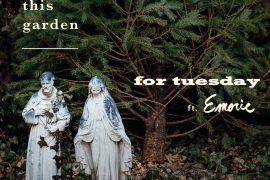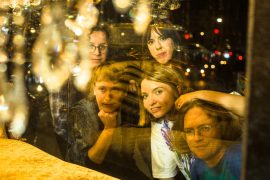Before the rise and rise and rise again of the pop world’s latest icon, Atwood Magazine sat down with Chappell Roan to discuss bringing drag and queer euphoria to the mainstream.
Stream: ‘The Rise and Fall of a Midwest Princess’ – Chappell Roan
When I first heard of Chappell Roan, her name wasn’t on the lips of every festivalgoer or at the tips of every pen in the music industry.
I will admit, I pronounced her name “Chappelle,” much to the consternation of my partner. This gaffe, though embarrassing, highlighted the intimacy of that moment.
There’s an inherent self-orientation in feeling like an artist sees you on a personal level, especially when they are still somewhat obscure. Yes, she was about to embark on a tour with reigning pop princess Olivia Rodrigo, but Chappell Roan was an artist who could dance across stages where one could see every move without needing a monitor in the nosebleeds. Here was a girl in drag from the Midwest singing about the euphoria of queer love.
Listening to the infectious beat of “HOT TO GO!” on a tinny speaker in my dining room, we fantasized about a future where the mainstream would embrace shy, queer, horny nerds like us. We were two queer kids in a straight-passing relationship, reveling in our parasocial kinship with Kayleigh Rose Amstutz.
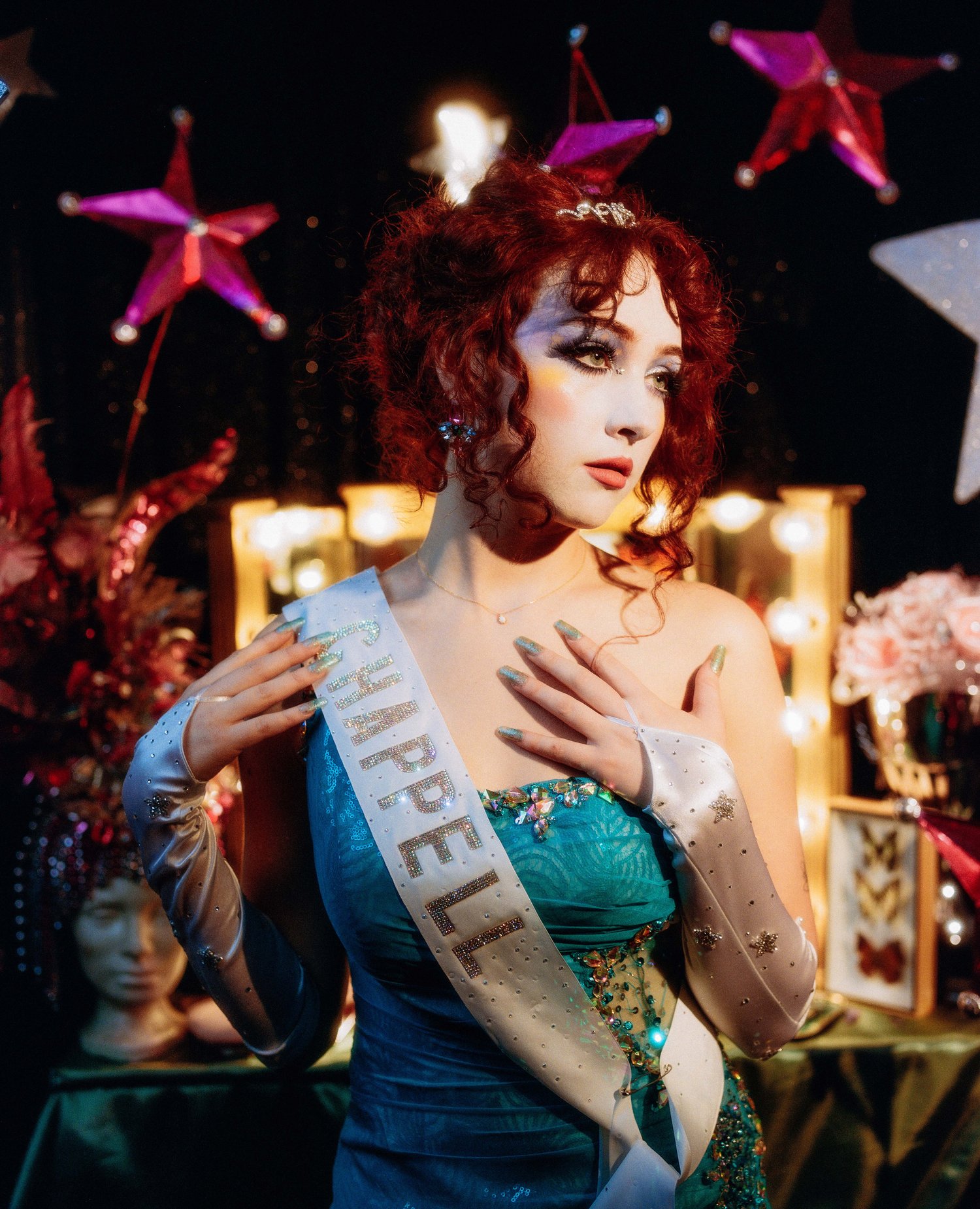
Chappell and contemporaries like the equally bold Jake Wesley Rogers, or the maximalist diva rock outfit The Scarlet Opera, offered us a sonic refuge where we could unabashedly be ourselves, decked in leather, glitter, and self-affirmation. There may not be a Pink Pony Club in West Hollywood, but we could create our own pop-up party wherever we went, as long as we had the energy to be queens every single day.
An emotional battle can break when the artist you once considered yours now belongs to everyone. On one hand, you pray for their success through the art they gave you. On the other, an aching sadness can bloom when that secret place of yours is no longer a secret. I won’t play the hipster gatekeeper card saying I liked Chappell Roan before she was cool, but there remains a pang of nostalgia for that intimate time and personal discovery that The Rise and Fall of a Midwest Princess, which recently hit #2 on the Billboard 200, soundtracked.
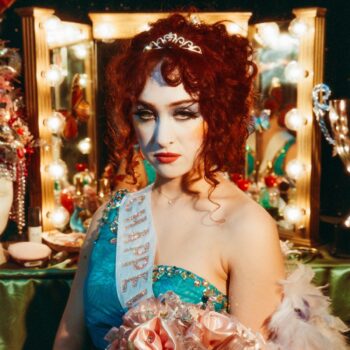
We would tear up the cheap linoleum to the mid-’90s Prince-indebted anthem “Super Graphic Ultra Modern Girl.” We indulged in late afternoon depression naps while listening to the raw, immediate keys of “Kaleidoscope.” Rarely does a pop star arrive so fully formed on her own terms, ready to bend the world to her whims, while also reaching that quiet, personal corner of your heart that few have seen and even fewer have treated right.
Now you can’t open TikTok without “Good Luck, Babe!” or “HOT TO GO!” rushing to your ears. Festival organizers are moving acts off larger stages to make room for our ascendant princess. Every festival is sweeping acts off their largest stages to accommodate our ascendant princess. It feels so sudden, and yet it seems like she’s always been here, the perfect artist snapped into the perfect moment like two jigsaw pieces. Now everyone else can make the same memories I did.

When the opportunity to speak with Chappell Roan landed on my desk, she was still the pre-Coachella artist who soundtracked my private queer euphoria.
Singing about the joy of embracing one’s sexual fluidity, her unabashed “muchness” was something I wanted to immerse myself in until it became my skin. She experiences this feeling too. Raised in a strict Christian environment in a small Missouri town, Chappell has carried the weight of internalized homophobia drilled into her from a young age. “My whole persona is just me trying to honor that version of myself that I was never allowed to be,” she once told PAPER Magazine.
For anyone who hasn’t yet heard The Rise and Fall of a Midwest Princess (and at this point, I’m wondering how), it’s a perfect match for the camp icon adorning its cover. The album is a glittering sonic explosion, crashing through speakers like a bedazzled meteor shower. Imagine the lovechild of a Midwestern county fair and an NYC drag show, raised on a diet of ’80s pop and TikTok immediacy. That’s its essence, from the Broadway show opener “Femininomenon” to the ballroom sweep of “My Kink Is Karma,” and the weeping keys on “Kaleidoscope.” It is sheer joy.
But the appeal of Chappell Roan extends beyond her blistering sound and celebration of all things queer and sapphic.
Since the first spark of her meteoric rise, she has sought to elevate the maligned and erased among us. In a world that has attacked drag queen story hours, she refuses to stay silent for her sisters. Chappell donates portions of ticket and merchandise sales to LGBTQ+ charities, actively participates in Pride events, and emphasizes the importance of queer visibility in conservative areas. “There are queer people everywhere in these teeny tiny towns who are the same bitches on the coasts,” she explains. “They just don’t have what those girls have.”
Even in coastal cities, freedom of expression isn’t universal. With her identity deeply woven into her artistry, Chappell expands that safe space for the rest of us, even if just for the thousands in front of her at a Lollapalooza stage.
Yet, there lingers a bittersweet feeling as those private kitchen dance sessions transition into hundreds of millions of streams globally. As of this week, Chappell Roan has seven songs on the Billboard Hot 100, and I couldn’t be happier for her. But part of me remains in that apartment, floorboards creaking beneath my feet, counting the days until I can catch my new favorite artist at the Wiltern.
I had the chance to speak with the newly crowned queen of pop right before her massive Coachella performance to discuss queer euphoria, DIY camp, and curating inspiration on Pinterest. This conversation belongs more to the world than to me, and I invite you to delve into what she had to say.
And even if you consider yourself a super fan too, please respect her boundaries.
— —
:: stream/purchase Good Luck, Babe! here ::
:: stream/purchase Midwest Princess here ::
:: connect with Chappell Roan here ::
Stream: “Good Luck, Babe!” – Chappell Roan
A CONVERSATION WITH CHAPPELL ROAN

Atwood Magazine: With drag queens opening your shows, could you share your thoughts on the importance of drag culture in today's music scene and its impact on your artistry?
Chappell Roan: In my artistry, it fuels everything. Drag is camp and camp is the most fun thing in the world, and that is what I want my project to feel like. Drag has always been a part of society, whether or not people know it. It’s been around for so long. I love that it’s becoming mainstream, but at the same time, a lot of harm is being done with drag bans. It’s such a strange time, but also amazing because drag is blossoming faster than it probably ever has really.
Music and fashion often go hand in hand. Can you share one of your most daring or wild fashion choices for a performance and what inspired that look?
Chappell Roan: For the carpet, I loved it when I wore the prosthetic pig nose. That felt very daring and was kind of scary, in a fun way.
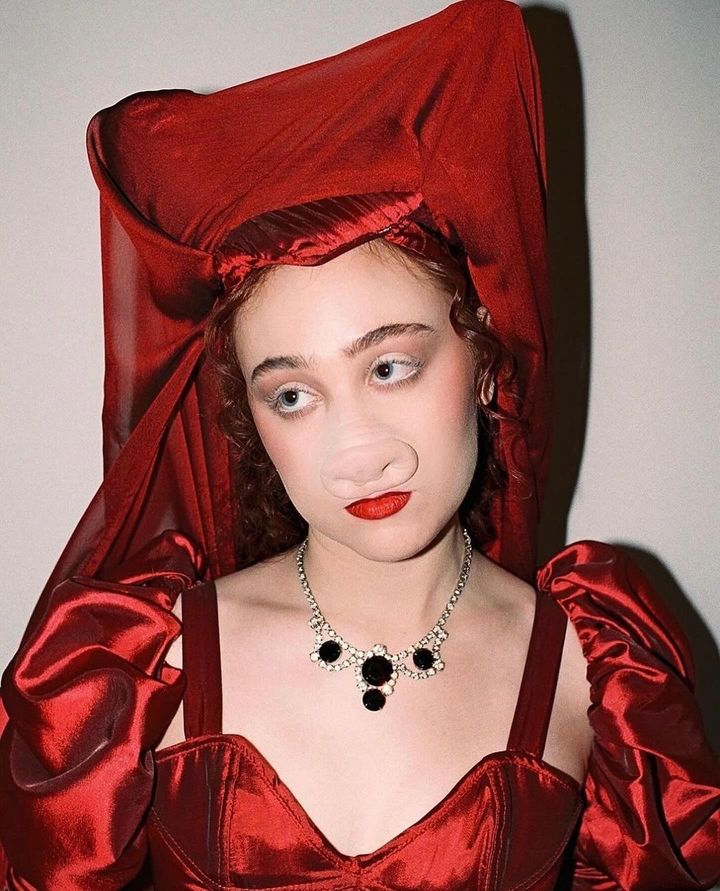

The DIY ethos is strong in your career approach. How do you maintain that hands-on connection to your art and fanbase while scaling up for festival-sized crowds?
Chappell Roan: I think just being in tune with my creative partners. I get creative say in everything. I am always on Pinterest, always watching films, always watching drag performances to see how I can incorporate DIY things other people have done.
Supporting LGBTQ+ organizations is a big part of your ethos. How are you continuing this tradition on the road, especially with varying local laws and regulations?
Chappell Roan: I have three local drag artists open for me every night where I highly encourage the audience to tip their local girls. We also, as we grow, want to grow the payment of the queens. Also, a portion of every ticket goes to For The Gworls – a black trans charity. We are continuing that since the first tour, and I want to do that for the rest of my career. I think it’s so important to give back to the community that gives me so much.

Drag is camp and camp is the most fun thing in the world, and that is what I want my project to feel like.
Can you share an experience where the live performance of a particular song resonated differently with the audience than when it’s heard on the album?
Chappell Roan: Probably “Casual.” It gets quite a bit more intense live than it does just listening to it. A lot more rock and a lot more “aggro” lol.
Lastly, just for fun: If you had to choose one song from The Rise and Fall of a Midwest Princess that you feel could be the anthem for your tour, which would it be and why?
Chappell Roan: Probably “Red Wine Supernova” because it kind of encapsulates everything with a country, campy vibe along with it. It’s very, very fun to perform, which is what I want tour to be: very fun!
— —
:: stream/purchase Good Luck, Babe! here ::
:: stream/purchase Midwest Princess here ::
:: connect with Chappell Roan here ::
Stream: “Red Wine Supernova” – Chappell Roan
— — — —

Connect to Chappell Roan on
Facebook, Twitter, TikTok, Instagram
Discover new music on Atwood Magazine
© Ryan Lee Clemens
:: Stream Chappell Roan ::

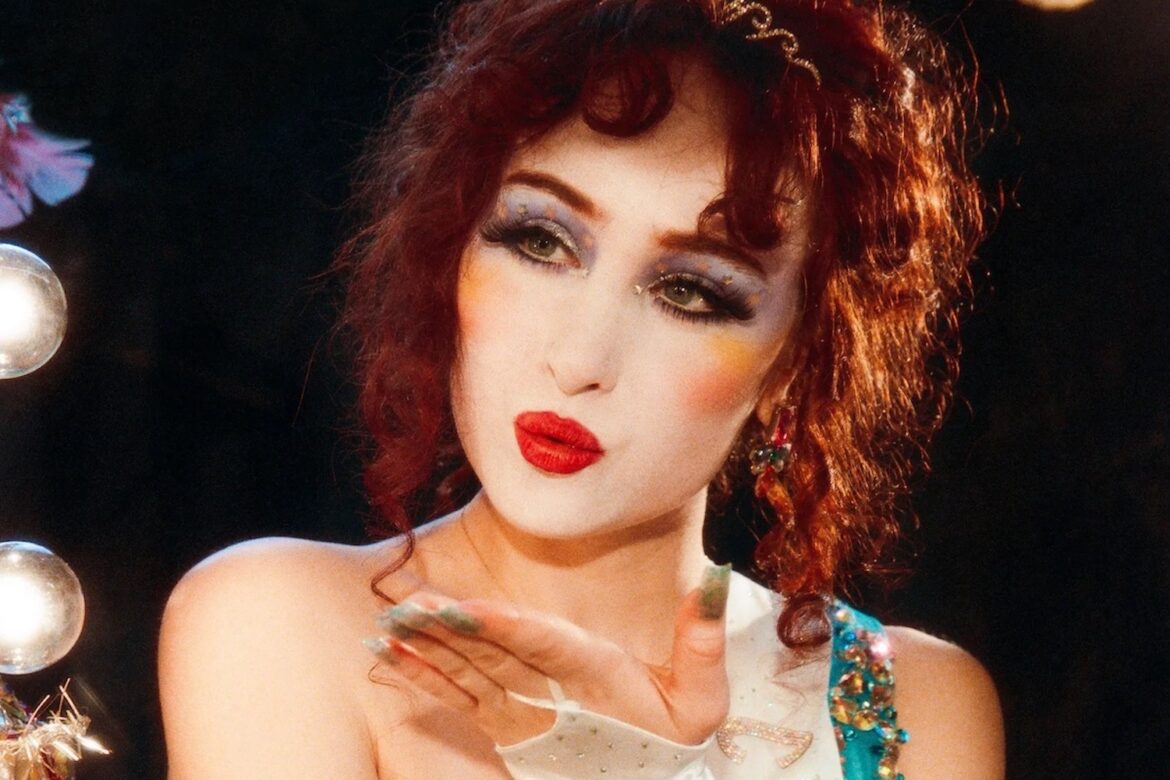
 © Ryan Lee Clemens
© Ryan Lee Clemens

